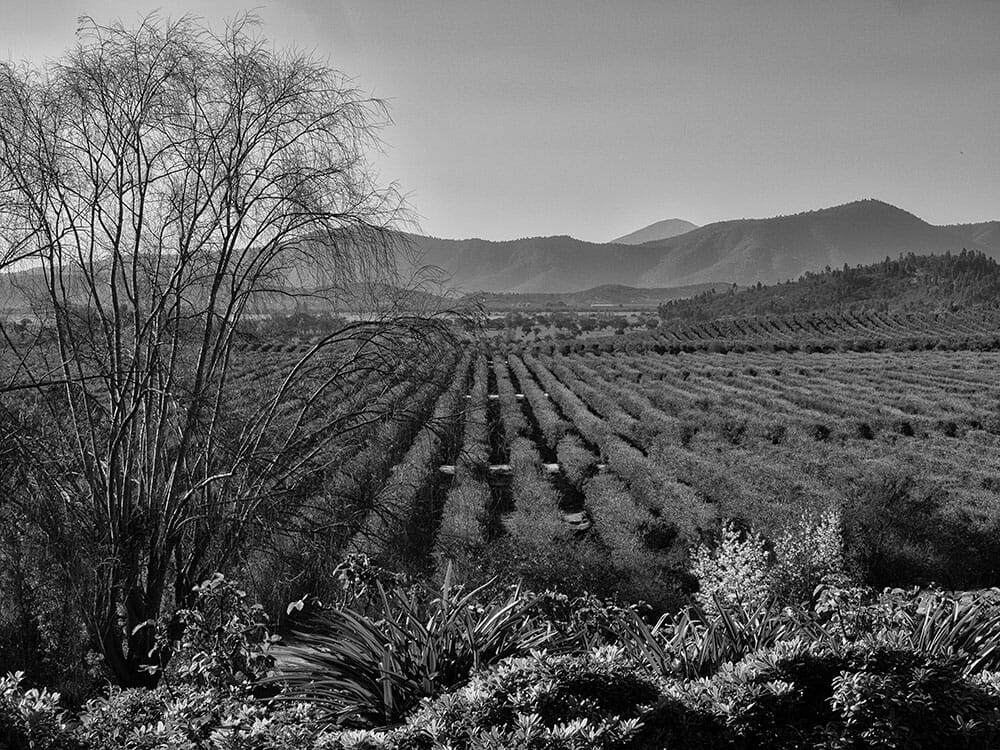Photo by Nicholas Coleman
Coleman Collection #20
PRODUCER
Monte Olivo
CULTIVAR
Hojiblanca
Harvest Date
May 2020
REGION
Maipo Valley, Chile
Monte Olivo began producing oil in 1999 on the sunny slopes of the Curacavi Valley, expanding in 2003 its original 40 hectares to 230 hectares with plantings in the Maipo Valley. Today, with 800 hectares planted, Monte Olivo leads Southern Hemisphere world-class oil production.
Their diverse olive grove consists of Greek Koroneiki, Italian Frantoio, Leccino and Coratina, as well as Spanish Arbequina, Arbosana, Picual, and Hojiblanca trees. Depending on variety, Monte Olivo plants medium to super high densities ranging from 400 to 2,200 trees per hectare. Each olive produces its own unique aroma, flavor and texture that can be used in blends or released as monocultivars.
Monte Olivo’s expertise balances quantity with quality, overseeing its grove with meticulous care that includes deep well sourced drip irrigation and effectively managed soil drainage.
The company tightly controls the entire process from tree to mill that includes manual side pruning with a tipping prune atop the super intensive varieties. Within hour hours of the harvest the fruit is cold-extracted at 26 degrees Celsius through two processing lines.
We’ve selected for this release a monocultivar Hojiblanca oil. Though most Spanish cultivars are for mass oil production, the Hojiblanca doubles as a table olive. When harvested early, the oil is medium bodied, softly herbaceous and creamy with undertones of peach and sweet almond, followed by a delayed elongated peppery finish. The cause of this peppery sensation – considered an attribute of high-quality olive oil – is oleocanthal, a natural phenolic compound that has both antioxidant and anti-inflammatory properties. This Hojiblanca is best utilized raw with reckless abandon over your favorite cuisine.
The Valle del Maipo is the closest Chilean wine region to Santiago, the capital city. The average rainfall, only 12 inches per year, sets a dangerously low moisture threshold. Any drier and the vines can perish. As a result, in the spring many industrious producers salvage the Andes runoff water to use for irrigation throughout the year. Producers grow a wide variety of grapes for wine production including Sauvignon Blanc, Chardonnay, Merlot, Cabernet Sauvignon, and most notably a lesser-known variety, Carmenére.
The Chilean winemaking industry benefitted greatly from the discovery that many vineyards thought to be Merlot were actually Carmenére. Wines produced from it resemble Merlot in that they’re soft and juicy with blueberry and blackberry currant flavors and are highly approachable. Furthermore, they also exhibit their own greener herbaceous notes. The pervasive cultivation of Carmenere provides Chile with something that no other country can – a wide assortment of wines produced from this grape. For excellent examples of Maipo Valley Carmenére seek out producers Antiyal, Pérez Cruz, and Viña Chocalán, and Legado.



